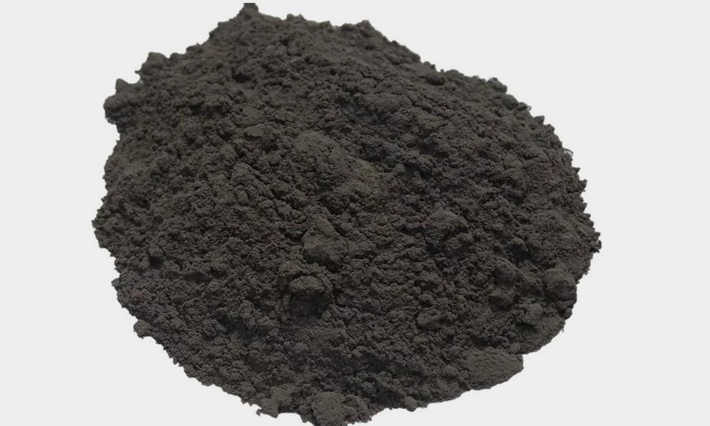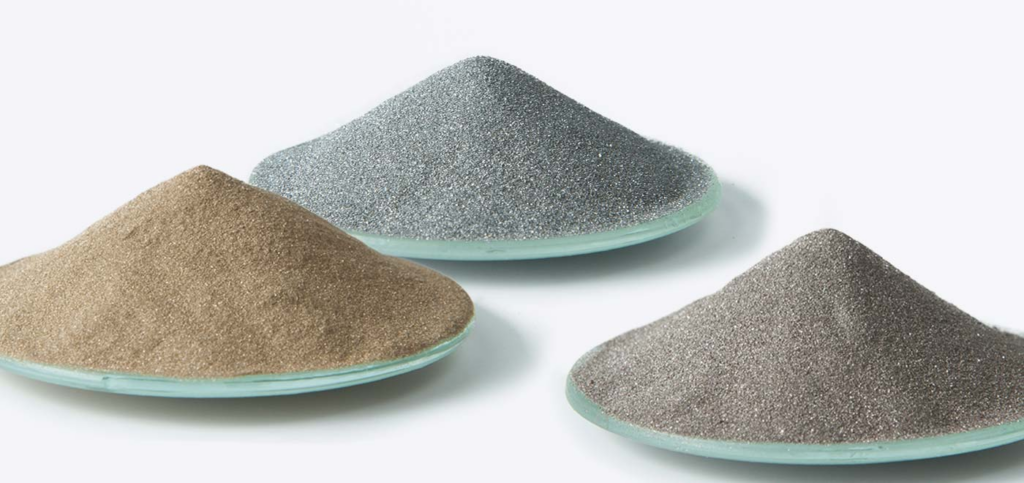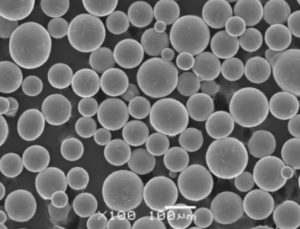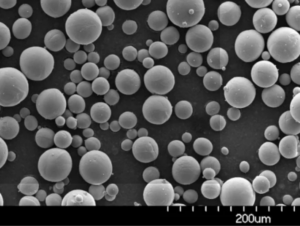金属射出成形(MIM)は、小型で複雑な金属部品を高い精度と再現性で作成するために使用される高度な3Dプリンティング技術です。このガイドでは MIM 3dプリンティング その仕組み、用途、設計上の考慮点、装置、材料、後処理、利点、限界、コストなどを網羅する。
MIM 3Dプリンティングの概要
MIMは、プラスチック射出成形と粉末冶金を組み合わせ、他の方法にはない複雑な形状を持つ精密なネットシェイプ金属部品を提供します。複雑な金属部品の少量大量生産に最適です。
MIM 3Dプリンティングの仕組み
MIM 3dプリントには、次のような重要なステップがある:
表1.MIM 3Dプリンティングのプロセスステップ
| ステップ | 説明 |
|---|---|
| 1.原料の準備 | 金属粉末をバインダーと混合して成形原料を作る。 |
| 2.射出成形 | 原料は金型に注入され、グリーン部品を形成する。 |
| 3.脱バインダー | 緑の部分からバインダーを取り除く |
| 4.焼結 | 脱バウンドされた部品は焼結され、金属粉が固体の物体に融合される。 |
| 5.二次加工 | 必要に応じて追加の仕上げと後処理を行う。 |
MIMは、従来の製造方法に匹敵する材料特性を持つ、完全に緻密で微細な金属部品を製造するための広範な設計自由度を提供する。
表2.MIM 3Dプリンティングの利点
| メリット |
|---|
| 複雑な形状と微細な特徴 |
| 優れた表面仕上げ |
| 幅広い素材 |
| 高い生産量 |
| 高収量からの低廃棄物 |
| 小型部品の費用対効果 |
MIMは、100グラム以下で102ミリまでの小型で複雑な部品に適している。様々な産業で大量に使用される金属3Dプリンティングの一般的な選択肢です。

MIM 3Dプリンティングの用途
MIM 3dプリンティングは、さまざまな合金から厳しい公差を持つ複雑な金属部品を製造することができる。
表3.MIM 3Dプリンティングの産業と用途
| 産業 | 一般的なアプリケーション |
|---|---|
| 航空宇宙 | タービンブレード、インペラ、ギア |
| 自動車 | 燃料系統部品、コネクター、ノズル |
| 消費者製品 | ジュエリー、時計、装飾金属アート |
| 歯科および医療 | 矯正装置、インプラント、手術器具 |
| 銃器 | トリガー、ハンマー、セーフティ、エジェクター |
| インダストリアル | バルブ、カップリング、ギア、摩耗部品 |
MIMは、高精度が要求されるさまざまな産業で、小型で複雑な金属部品の製造に使用されている。
MIM 3Dプリンティングのための設計上の考慮事項
MIMの能力を最大限に引き出し、不具合を回避するためには、適切な部品設計が極めて重要です。以下に主な設計ガイドラインを示します。
表4.MIM 3Dプリント部品の設計ガイドライン
| デザイン面 | 推薦の言葉 |
|---|---|
| 部品サイズ | 最大100g、最大102mm |
| 肉厚 | 0.3 – 歪みを防ぐために 4 mm |
| 表面仕上げ | 脱型のための半径と抜き勾配 |
| 残留応力 | 均一な肉厚 |
| 部品形状 | 反りやすい細長い部分は避ける |
| 組み立て | 多部品アセンブリのためのインターロック機能の設計 |
| テクスチャー | 公差および形状はCADモデルと異なる場合があります。 |
設計段階でMIMの専門家に相談することで、製造性を明確にし、手戻りを防ぐことができます。また、シミュレーションツールは、MIMの能力と限界に合わせて設計を最適化することができます。
金属部品を3DプリントするMIM装置
ユニークなMIM製造プロセスには特別な装置が必要です。以下に主なMIM 3dプリンティングマシンを紹介する。
表5.MIM 3Dプリンティングの主な設備
| 設備 | 目的 |
|---|---|
| ミキサー | パウダーとバインダーを原料に混ぜる |
| 射出成形機 | 原料からグリーンパーツを形成する |
| 脱バインダー炉 | グリーンパーツからバインダーを取り除く |
| 焼結炉 | 茶色い部分の粉粒子を溶かす |
| CNCマシニングセンター | 焼結部品の二次加工 |
MIM製造は、各工程のために特別に設計された独自の装置による完全なワークフローを利用している。
その他のMIM補助装置には、原料ホッパー、脱バインダータンク、研磨/琢磨ツール、計測装置、ふるいなどがある。MIMの大量生産では、複数の工程を統合した自動化システムが一般的である。
表6.MIM装置のコスト範囲
| マシンタイプ | コスト範囲 |
|---|---|
| 小型卓上炉 | 50,000ドル |
| 工業用焼結炉 | 150,000ドル |
| CNCマシニングセンター | $100,000 - $250,000 |
| 自動MIMライン | 50万ドル |
コストは、生産量、処理能力、自動化要件によって大きく異なる。受託製造業者と提携することで、大規模な設備投資をすることなくアクセスが可能になる。
金属MIM 3Dプリンティング用材料
MIMの主な利点は、アプリケーションの要件を満たすために使用できる材料の多様性である。
表7.MIM 3Dプリンティングの一般的な材料
| 素材 | 特性と応用 |
|---|---|
| ステンレス | 医療用耐食性 |
| チタン合金 | 航空宇宙部品用の高強度 |
| コバルト・クロム | 歯科インプラントの耐摩耗性 |
| 工具鋼 | 工業用工具の硬度 |
| アルミニウム合金 | 軽量で熱伝導率が高い |
| 銅合金 | 電気/熱伝導率 |
| 磁性合金 | ソフト磁気特性 |
MIMは、焼結後に高性能合金をほぼ完全な密度の部品に加工することができます。材料の選択は、機械的ニーズ、耐食性、耐摩耗性、その他の仕様によって決まります。
MIM 3Dプリント金属部品の後処理
MIM工程の後、さらに後処理を施すことで、最終的な部品の特性が向上する。
表8.MIM部品の一般的な二次加工
| プロセス | 目的 |
|---|---|
| 熱処理 | 微細構造および機械的特性の改良 |
| メッキ | 耐食性または耐摩耗性の向上 |
| 不動態化 | ステンレス鋼から遊離鉄を除去する |
| 機械加工 | 寸法精度と表面仕上げの向上 |
| マーキング | 部品識別 |
| テスト | 機械的性能の確認 |
MIM部品は、穴あけ、ねじ山のタップ、塗装、レーザー彫刻によるマークやロゴなど、さまざまな仕上げ工程を必要とする場合があります。
MIM 3Dプリンティングの長所と短所
MIMには独自の利点があるが、同時に考慮すべき限界もある。
表9.MIMの利点と限界
| メリット | デメリット |
|---|---|
| 複雑な形状 | 部品サイズ制限 |
| 表面仕上げ | 設計上の制限 |
| 幅広い素材選択 | 材料強度の低下 |
| 高い生産性 | 先行プロセス開発 |
| ニアネットシェイプ | 二次加工が必要な場合が多い |
| 低廃棄物 | 高い設備コスト |
MIMは、バインダージェッティング、DMLS、EBMといった他の粉末ベースのAMプロセスと競合しており、それぞれにトレードオフがある。製造方法を部品要件と生産量に適合させることが不可欠です。

MIM 3Dプリンティングパートナーの選び方
適格なMIMメーカーを選ぶことは、高品質の部品をコスト効率よく生産するための鍵である。
表10.MIMパートナーの選定基準
| ファクター | 説明 |
|---|---|
| 専門知識 | 長年の経験、訓練を受けた技術者 |
| 品質システム | ISO 9001またはAS9100認証 |
| 生産能力 | スループット、迅速なターンアラウンド |
| パフォーマンステスト | 機械的特性の検証 |
| 設計能力 | シミュレーション、製造性に関するアドバイス |
| 材料 | 提供範囲 |
| 後処理 | 機械加工、仕上げ、メッキなど |
| 垂直統合 | 全プロセスのワークフローをコントロール |
サプライヤー候補の工場を訪問することで、その能力と能力を直接評価することができます。また、顧客からの評価や部品の例も、サプライヤーの能力に対する信頼につながります。
MIM 3Dプリンティングのコスト分析
MIMのコストは多くの変数に依存するが、大量生産には経済的である。
表11.MIM部品のコストに影響を与える要因
| パラメータ | コストへの影響 |
|---|---|
| 部品サイズ | 小さい方が部品単価が安い |
| 生産量 | 数量が増えればコスト/部品は下がる |
| 素材 | よりエキゾチックな合金は高価 |
| 公差 | より厳しい公差はコストを増加させる |
| 二次加工 | コスト増 |
| デザインの複雑さ | 複雑なほど高価になる |
詳細なRFQは、アプリケーションの特定の設計、材料、品質、およびボリュームのニーズに合わせた価格を提供します。MIMの製造コストは、複雑で小さな部品の機械加工に比べて競争力があります。
表12.部品コストの目安
| 部品点数 | 部品単価 |
|---|---|
| 10-100 | $50 – $500 |
| 1,000 | $10 – $50 |
| 10,000 | $2 – $15 |
| 100,000+ | $0.50 – $5 |
規模の経済により、MIMは、部品単価の高い少量生産に対し、大量生産で高いコスト効率を実現している。

よくある質問
以下は、MIM積層造形に関する一般的な質問への回答です。
表13.MIMについてよくある質問
| 質問 | 回答 |
|---|---|
| MIMはどのような材料を加工できるのか? | すべての標準金属 – ステンレス鋼、チタン、アルミニウム、工具鋼、超合金、磁性合金など。 |
| MIMで製造できる部品のサイズは? | 最大100g、約100mm×100mm×100mm。 |
| MIMの所要時間は? | 数量にもよるが、通常4~6週間。 |
| どのような仕上げが可能か? | 粗さ2~4ミクロンのアス焼結仕上げ。 |
| 可能な公差は? | 工程により±0.5%~±0.1%程度。 |
| MIMは何個の部品を作ることができるのか? | 生産バッチには数千万から数百万の部品が含まれる。 |
| MIMはCNC加工と比べてどうですか? | 大量に生産される小さな複雑な部品のコストを下げ、材料の無駄を減らす。 |
| MIMは積層造形プロセスなのか? | そう、これは粉末床溶融AM技術と考えられている。 |
| どのような後処理が必要ですか? | ほとんどの部品は、熱処理、表面仕上げ、メッキなどを必要とする。 |
| MIMはマルチマテリアル部品を作れるか? | いいえ、印刷できるのは均質な材料だけですが、アセンブリは印刷できます。 |
その他ご不明な点がございましたら、お気軽にお問い合わせください!MIMは、複雑な金属部品を製造するための費用対効果の高い方法を提供します。
結論
MIMは、優れた機械的特性、複雑な形状、微細な特徴、滑らかな表面仕上げを持つ、小型で高精度の金属部品を製造する汎用性の高い3Dプリンティングプロセスです。航空宇宙、自動車、医療、その他さまざまな産業において、複雑な部品をコスト効率よく大量に製造することに優れています。
製造性の最適化により、MIMは他の方法では実現不可能な金属積層造形ソリューションを提供することができます。このガイドでは、プロセスの仕組み、主な用途、設計原理、関連機器、使用材料、後処理、長所と短所、サプライヤの評価基準、参考価格、およびMIM 3dプリントに関するFAQについて説明します。MIMの専門家に相談し、特定の部品のニーズや生産量に適したプロセスかどうかを判断してください。
Additional FAQs About MIM 3D Printing
1) What powder characteristics matter most for MIM feedstock quality?
- Fine PSD (typically D50 ≈ 10–20 µm), high tap/apparent density, narrow distribution, low O/C/S interstitials, and spherical morphology minimize binder loading, improve molding rheology, and reduce sinter shrink variability.
2) How do you estimate sinter shrinkage and final dimensions?
- Typical linear shrinkage is 12–20% depending on alloy and solids loading. Use supplier material cards or DOE to build shrink factors per axis; apply compensation to mold/CAD and validate with first-article measurements.
3) Which alloys are most production-proven in MIM 3D printing?
- 17-4PH, 316L, 4605/8620 low-alloy steels, F-75 CoCr, M2/H13 tool steels, Ti-6Al-4V (specialized lines). Each has established debind/sinter recipes and predictable mechanical properties.
4) How does MIM compare to binder jetting for small metal parts?
- MIM excels in very high volumes with ultra-fine features and tight tolerances via hardened molds; binder jetting offers faster tooling-free iteration and mid-volume viability. Both rely on debind/sinter; MIM generally achieves higher consistency on microfeatures.
5) What are best practices to avoid defects during debinding?
- Ramp slowly through binder softening temperatures, ensure venting and uniform cross-sections, avoid thick-thin junctions, employ wicking media or catalytic debind where applicable, and maintain furnace atmosphere/dew point control.
2025 Industry Trends for MIM 3D Printing
- Materials convergence: Expanded property datasets for 17-4PH, 316L, and Ti-6Al-4V enable faster design allowables and regulatory filings.
- Data-driven sintering: Wider adoption of in-situ temperature/atmosphere sensing and AI-assisted profiles reduces distortion and porosity.
- Hybridization: MIM + micro-CNC/laser texturing post-sinter delivers tighter GD&T without sacrificing throughput.
- Sustainability: Higher recycled content in powders and closed-loop binder recovery reported in ESG disclosures.
- Medical and e-mobility demand: Growth in surgical instruments, orthodontics, and compact drivetrain components.
2025 Market and Technical Snapshot (MIM 3D Printing)
| Metric (2025) | Typical Value/Range | YoY Change | Notes/Source |
|---|---|---|---|
| Typical MIM part mass | 0.02–80 g | Stable | Industry benchmarks |
| Linear shrinkage (common alloys) | 12–20% | Better predictability | Supplier material cards, DOE |
| Production Cp/Cpk (critical dims) | ≥1.33/≥1.67 achievable | Up | SPC with inline metrology |
| 17-4PH MIM UTS (H900) | 1000–1200 MPa | Stable | Vendor datasheets, MPIF |
| 316L MIM density (relative) | 96–99% | +0.5 pp | Optimized sinter/HIP |
| Tooling lead time (prototype → production) | 3–10 weeks | Down | Rapid mold inserts |
| Cost per part at 100k units | $0.5–$5 | Stable | Quotation analyses |
Indicative sources:
- MPIF standards and design guidelines: https://www.mpif.org
- ISO/ASTM AM and powder standards (52900 series): https://www.iso.org | https://www.astm.org
- ASM Handbooks (Powder Metallurgy; Heat Treating): https://www.asminternational.org
- NIST resources on sintering and powder characterization: https://www.nist.gov
Latest Research Cases
Case Study 1: High-Yield 17-4PH MIM Micro-Actuator Components (2025)
Background: A robotics OEM needed sub-1 g components with tight positional tolerances and high strength.
Solution: Spherical 17-4PH powder (D50 ≈ 14 µm) at 63 vol% solids; two-stage solvent/thermal debind; vacuum sinter with controlled cooling; H900 aging; inline optical metrology + SPC.
Results: Yield improved to 96% (+8 pp vs. prior run); UTS 1120 MPa, elongation 7%; Cpk ≥1.67 on three critical features; part cost −12% via cycle-time tuning.
Case Study 2: Ti-6Al-4V MIM for Orthodontic Brackets with Low Nickel Exposure (2024)
Background: Dental supplier required nickel-free brackets with smooth surface and biocompatibility.
Solution: Ti-6Al-4V ELI powder, catalytic debind-compatible binder; high-vacuum sinter + HIP; electropolish + ASTM F86 passivation; ISO 10993 biocompatibility testing.
Results: Relative density 99.2% post-HIP; surface Ra 0.6–0.8 µm; no cytotoxicity/irritation; slot dimensional tolerance ±0.03 mm; validated 1M-cycle fatigue for wire engagement.
Expert Opinions
- Prof. Randall M. German, Powder Metallurgy Scholar and Author
Key viewpoint: “Solids loading and carbon/oxygen control dominate MIM dimensional repeatability and final properties—optimize these before chasing minor process tweaks.” - Dr. John Slotwinski, Manufacturing Metrology Expert (former NIST)
Key viewpoint: “Inline SPC with lot-specific shrink factors and verified PSD/interstitials is essential to scale MIM 3D Printing beyond pilot lines.” - Dr. Cristina L. Branco, Director of Advanced PM Programs, Automotive OEM
Key viewpoint: “Hybrid cost models—rapid prototype tooling to production tooling—shorten time-to-SOP without compromising Cp/Cpk targets.”
Practical Tools and Resources
- MPIF 35 and MIM design guides for materials/allowables: https://www.mpif.org
- ISO/ASTM 52900-series (terminology, powders, qualification): https://www.iso.org | https://www.astm.org
- ASM Digital Library (Powder Metallurgy; Heat Treatment): https://www.asminternational.org
- NIST sintering and powder metrology resources: https://www.nist.gov
- QC instrumentation:
- Rheology/solids loading: capillary rheometers
- PSD/shape: Malvern Mastersizer, image analysis
- Interstitials O/N/H: LECO analyzers
- Inline SPC: statistical software integrated with CMM/vision metrology
Last updated: 2025-08-26
Changelog: Added 5 targeted FAQs; introduced 2025 market/technical snapshot with table; included two recent case studies; compiled expert viewpoints; curated practical tools/resources tailored to MIM 3D Printing
Next review date & triggers: 2026-02-01 or earlier if MPIF/ISO/ASTM update MIM standards, major vendors release new validated material cards/shrink models, or NIST/ASM publish updated sintering and property datasets for MIM alloys

